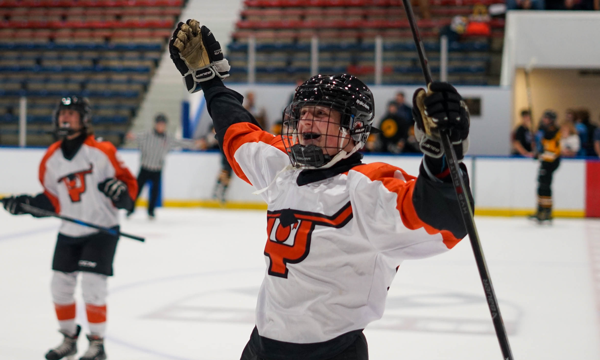Hockey can be a physical game, but bullying of any kind has no place in the sport.
Ed Snider Youth Hockey & Education sent that emphatic message two years ago when it implemented the Olweus Bullying Prevention Program.
Snider is a non-profit organization founded in 2005 by Ed Snider, the founder of the Philadelphia Flyers, that has grown to serve some 1,800 inner-city kids on and off the ice.
With the motto “From Crayons through College to Careers,” Snider has distributed more than $8 million in scholarships since its inception. The program can be found at six rinks across the Greater Philadelphia Region and features intramural and travel leagues.
“We are very much aware that a lot of our support is needed in under-resourced neighborhoods, and each of the under-resourced neighborhoods has a unique set of needs,” said Katy Hsieh, Snider’s senior vice president of development, who has been with the organization for nearly a decade. “It’s really great to see students from all across the city celebrate hockey and be part of the program.”
When Snider was made aware by the Pennsylvania Department of Health that funding existed for a bullying prevention effort, the organization applied and was accepted.
“A lot of the things that Olweus was doing complemented what we had already built into our afterschool programming,” said Hsieh, “and so we went for it.
“Education is one of our top priorities. We offer academic support programming, scholarship programming and then our life skills curriculum.”
The comprehensive Olweus program includes schoolwide, classroom, individual and community components and is designed for K-12 student to reduce and prevent bullying and improve peer relations. It has been implemented in more than a dozen countries and in thousands of U.S. schools.
Katherine Wakefield, Snider’s senior coordinator of life skills, led the implementation of the bullying prevention program and took the two-part training with Olweus.
“Coming back from the training, we established a leadership team within Snider to kind of create goals for the program and figure out how we can take the initiatives and the goals of this Olweus program and really make it work within Snider and make bullying prevention a priority,” Wakefield said, “which is so important for any community’s program.”
Hockey is only part of the Snider organization. Any program it runs emphasizes life skills and focuses on ways to have kids develop off the ice as much as on it.
In addition to bullying prevention, Snider stresses self-esteem, friendship, respect and accountability. Wakefield said all of those factors can impact the environment in the program and reduce bullying between students.
Bullying doesn’t just occur between players, however. Staff, coaches and parents can also be involved.
“We wanted to make sure that we had a culture where bullying wasn’t accepted at any level — no bullying from the stands, no bullying from the benches, and no bullying right on the ice with the kids involved,” Hsieh said.
“I would say an even bigger part of the Olweus programming is the emphasis on staff training,” Wakefield said. “There’s just a huge emphasis put on staff training. That has really helped us.
“It just gives us the chance to provide coaches with steps and tips and things that’ll help them feel confident in their ability to step in and intervene whenever they see something.”
Snider implemented the program not because bullying had become a problem with the organization specifically, but with the knowledge that it’s an issue with this age group in general.
“When you hear that even from one student out of over 1,000, it still is like, how can we do better?” Wakefield said. “Even if it just came up a few times, it’s still really important. We still want to make sure that if kids are experiencing this anywhere else, they have Snider to come and spend time in a safe and positive environment. They know that Snider coaches care about them, and they know what to do and how to help.
“We really just want our students to understand and our staff to understand that bullying and harmful behavior, it is against our rules. It doesn’t have a place here.”
Story from Red Line Editorial, Inc.



